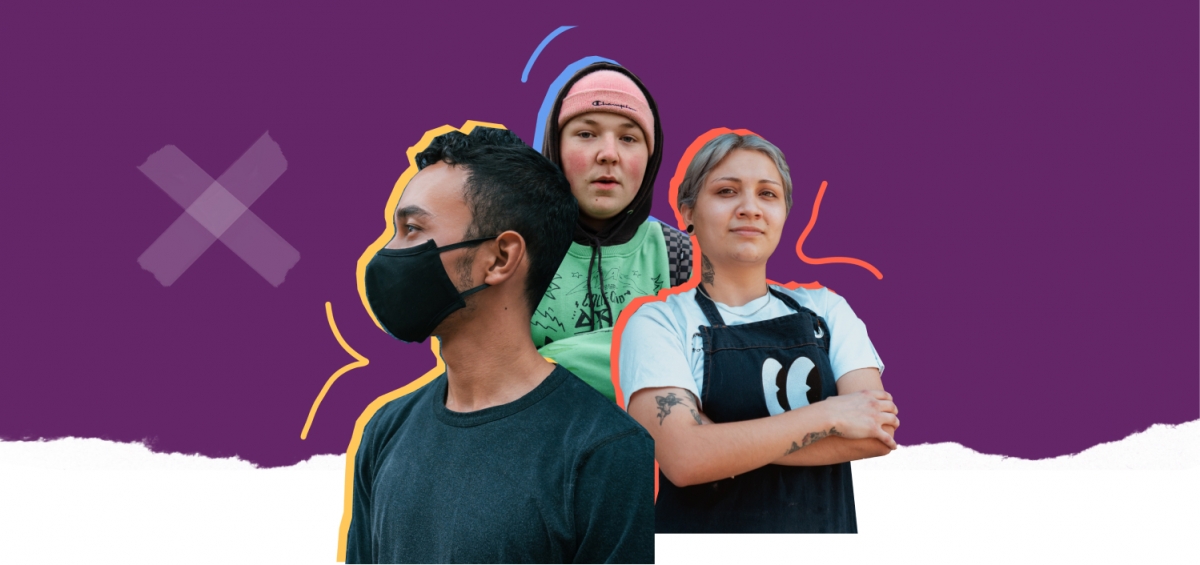
Our vision
The Victorian Government reached out to young people across the state to inform a new state-wide youth strategy. We wanted to hear your views on how we can make our state the best place to be for young people. A strategy – if you’re wondering – is a key government document that outlines and plans the way forward for a change, reform or policy.
Our aim in developing a new youth strategy is to create a Victoria where all young people are healthy, safe, and feel empowered to contribute to the issues that affect them. We want every single young person to have fair access to opportunities and support to participate in the social, economic, and civic life of our state. A new youth strategy for Victoria will direct government on how to support young people now and into the future.
Since we started this listening exercise we have:
- Heard from over 1,800 young Victorians and youth organisations through online forums, written submissions, an online survey and social media activities over a 3-month public consultation period
- Analysed and considered what we heard from young people and the community, including working closely with our Victorian Youth Congress, to develop six priority areas that young people want to see government change and champion
- Worked with all parts of government to refine these priorities and activities across areas like housing, education, youth justice and climate change
- Distilled all these great ideas, recommendations, and opportunities into writing (and many hours editing!) the new youth strategy.
This strategy aims to reach young people across our state, from all backgrounds, communities and experiences, including Aboriginal young people, multicultural and multifaith young people, LGBTIQ+ young people and disabled young people. We are committed to partnering with young people and the youth and community sectors, and across government through culturally safe and inclusive approaches to inform every step of implementing this strategy and change how government works for young people.
Design principles
The strategy is underpinned by six design principles that guided its development and will influence how it is implemented:
-
Moving beyond giving voice: Young people’s unique knowledge and skills enable them to make valuable contributions to decision-making. It is time to start inviting young people into rooms where decisions are made.
-
Taking a strengths-based approach: we want to highlight young people’s strengths, not just challenges.
-
Understanding a young person’s development: considering how significant changes and transition points in young people’s lives influence the support they need.
-
The importance of place and culture: Place-based approaches recognise the unique circumstances of areas and communities.
-
Focusing on prevention first: We want to reduce barriers young people face and strengthen their families and communities before they become major problems.
-
Centring diversity, inclusion and accessibility: we can improve young people’s sense of wellbeing and belonging by recognising the complexity of their lived experience and how it shapes who they are.
Priorities
The youth strategy recognises that all issues that matter to Victoria, matter to young people, our priorities and promises to young people are:
- Priority 1: Young people are healthy and well
- Priority 2: Young people are safe and secure
- Priority 3: Young people achieve their goals through education, training and employment
- Priority 4: Young people are respected and involved in decisions about their communities
- Priority 5: Young people are confident an strong in their identity and culture and are supported in their communities
- Priority 6: Services are coordinated, responsive and accessible
Outcomes framework
A whole-of-government outcomes framework has been developed to complement the youth strategy. This framework outlines key outcomes for the Victorian Public Service and community service providers to work together towards achieving. The outcomes framework also includes indicators that provide a way to track progress that is made towards addressing these priorities.
To learn more about the outcomes framework go to Measuring and reporting on progress on the vic gov website.
View the Youth Strategy
In this report…
Glossary
Discrimination: Discrimination is the unfair or prejudicial treatment of people and groups based on characteristics such as race, gender, age or sexual orientation.
Emotional abuse: Emotional abuse is a pattern of behaviour in which the perpetrator tries to control another person by using emotions to criticize, embarrass, shame, blame, or otherwise manipulate them.
Family violence: Family violence is any threatening, coercive, dominating, or abusive behaviour that occurs between people in a family, domestic or intimate relationship, or former intimate relationship, that causes the person experiencing the behaviour to feel fear.
Harassment: Behaviour that demeans, humiliates or embarrasses a person.
Neglect: When a child or young person is not receiving the care they need to keep them safe and healthy.
Mental abuse: The use of threats, verbal insults and other more subtle tactics to control a person’s way of thinking.
Out-of-home care: a temporary, medium or long-term living arrangement for children and young people who cannot live in their family home.
Physical abuse: Physical abuse happens when someone deliberately hurts your body or takes away your control of your body.
Self-determination: Self-determination means different things to different people. The United Nations Declaration on the Rights of Indigenous Peoples (UNDRIP) describes self-determination as the ability for Aboriginal people to freely determine their political status and pursue their economic, social and cultural development. It also describes self-determination as a right that relates to groups of people, not only individuals.
Trauma: Trauma is an emotional response to a terrible event. Immediately after the event, shock and denial are typical. Longer term reactions include unpredictable emotions, flashbacks, strained relationships, and even physical symptoms like headaches or nausea.

